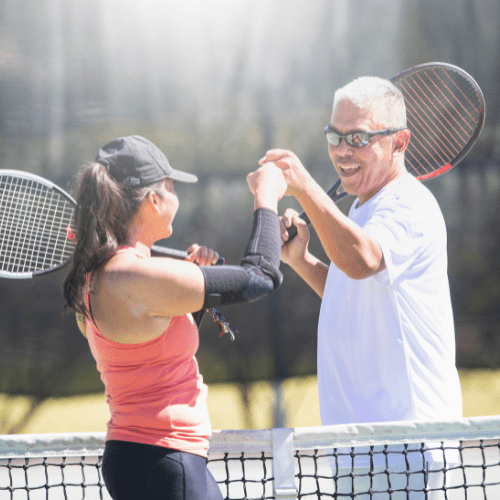The Grand Slam of Projects

Recent Blogs
Leading in the Grey
Why Project Teams should start with curiosity, not connection
Unlearning is the leadership skill nobody talks about
Conflict handled well is a doorway to trust
Life keeps teaching until we listen
When values clash: conflict or opportunity?
Before the Plan, comes the Pause
The First Five Minutes: what your project team vibe reveals
Butterflies before bravery: why leaders overthink tough conversations
Envision the intensity of a Grand Slam final. The stadium is packed, the crowd is roaring, and at the centre of it all, two tennis players are locked in a battle of skill, strategy, and endurance. Yet, behind each player, there’s a team: coaches, physiotherapists, dieticians, and support staff, all playing their part in the journey to victory. This is the world of professional tennis, a solo sport that, paradoxically, is anything but a one-person show.
Did you see the epic Australian Open Men’s Final between Jannik Sinner and Daniil Medvedev? Sinner was down 2 sets to win the championship 3-6, 3-6, 6-4, 6-4, 6-3.
In tennis, the player is visible, making the crucial plays, and bearing the weight of expectations. But the success of this player is a tapestry woven from the efforts of many. The coach, with strategic insights and psychological support, mirrors the role of a mentor or senior manager, guiding the team towards achieving its objectives. The physiotherapists and dieticians ensure the player’s physical well-being, akin to a project team ensuring their tools and systems are optimal and resilient.
The support crew in tennis, handling everything from equipment to scheduling, reflects the multifaceted support roles within a project team, such as coordination, governance, reporting and human resources. Each role is pivotal, contributing to the overall performance and stability of the team.
From tennis, project teams can learn the importance of individual accountability and the impact of personal performance on the collective goal. Each swing of the racket, like each task completed in a project, moves the team closer to success. The mental toughness and resilience of tennis players, who must quickly recover from setbacks and maintain focus under pressure, offer lessons in navigating project challenges.
Moreover, the relationship between a tennis player and their coach highlights the significance of feedback and continuous improvement. Just as a coach provides real-time feedback and strategic adjustments, project teams must offer constructive feedback and encouraging growth and adaptation.
The world of professional tennis teaches us that while individual brilliance shines brightly, it is the collective effort and support that truly leads to grand slam victories. For project teams, embracing this ethos means recognising the value of each role, fostering a culture of mutual support, and striving for excellence together.
Let’s take inspiration from the tennis court, applying these lessons of resilience, strategy, and teamwork to our projects, aiming not just for success, but for a championship-winning performance.
Here are five strategies to kick start the year:
Strategic Flexibility
Tennis players must adjust their strategies based on their opponents and match conditions. Similarly, project teams should be adaptable, ready to shift strategies as project dynamics change. Action: Encourage regular strategy review sessions, allowing the team to pivot plans based on current data and feedback, fostering a culture of agility.
Continuous Feedback
The relationship between a tennis player and their coach is pivotal for growth. Project teams should cultivate an environment where feedback is constant and constructive. Action: Establish a continuous feedback loop within the team, including peer-to-peer feedback and regular one-on-ones with project leaders, to ensure personal and team development.
Strengthening Team Cohesion
The bond between a player, coach, and support team in tennis underlines the importance of strong team relationships. Project teams need to cultivate a sense of unity and collaboration. Action: Organise regular team-building activities that are not work-related to strengthen relationships and improve team dynamics.
Individual Accountability within Team Goals
Every swing in tennis can contribute to victory or defeat, emphasising the importance of individual actions within team objectives. Project members should recognise their impact on the team’s success. Action: Set clear individual goals that align with the project’s broader objectives and hold regular check-ins to track progress and accountability.
Leveraging Technology for Efficiency
Tennis players use technology to analyse performance and gain competitive advantages. Project teams can similarly benefit from leveraging the latest tools and software for efficiency. Action: Stay abreast of the latest project management and collaboration tools. Regularly assess and integrate technology that can streamline workflows and enhance team collaboration.
These strategies are designed to enhance project team performance by learning from the principles that guide professional tennis players and their teams. By focusing on these areas, teams can aim for a winning performance in their projects.
